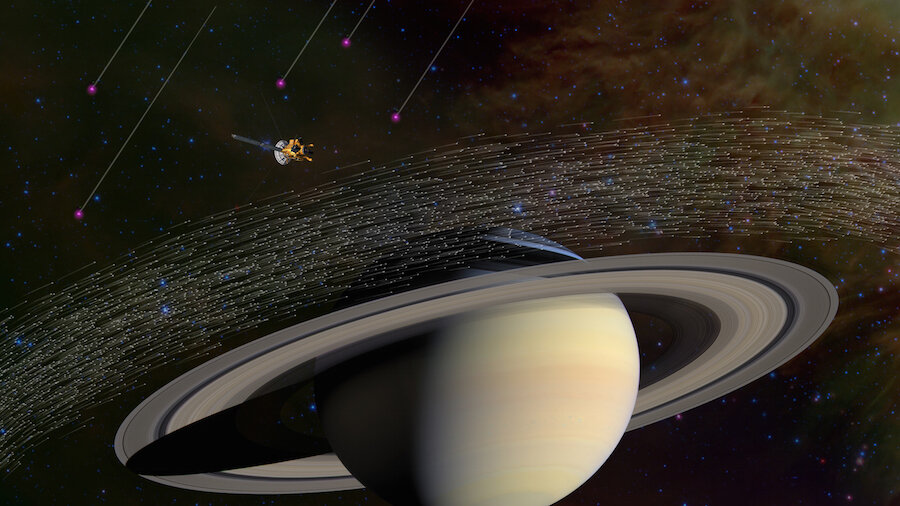Interstellar dust: How these rare cosmic specks challenge our views
Loading...
Like a bugs spattering on a small windshield in space, NASA’s Cassini spacecraft has been able to "capture" a number of interstellar dust particles buzzing past.
The rare dust has traveled from the space between stars, before arriving to our own solar system. Scientists with the Cassini program had hoped the spacecraft, which has been orbiting around Saturn and its moons since 2004, would be able to detect the microscopic grains, but weren't certain that the instrument would be effective.
But in recent years, the spacecraft was able to analyze a handful of microscopic interstellar dust particles, 36 in total. The research was published this week in the scientific journal Science.
Why does space dust matter?
"Interstellar dust is one of the last bastions of the unknown in space, its individual particles being only about 200 nanometres in size and very hard to find," explained Prof. Dr. Mario Trieloff, earth scientist from Heidelberg University, in a press release
Cosmic dust is created when stars die. Small in size, the particles are shot into the universe at speeds which allow them to travel through solar systems without being caught by gravity or, unfortunately, by human scientists.
In the past, a few stardust particles have been found in cosmic objects, such as meteorites. The meteorites can preserve the dust for millions of years, some reaching as far back to the creation of the solar system. But that means when scientists find them, they are typically “old, pristine and diverse in their composition,” according to the NASA’s Cassini team.
The specks found by Cassini weren’t trapped in meteorites. They were traveling 45,000 miles per hour past Saturn and collided with the Cassini Cosmic Dust Analyzer, an instrument that measures the speed, size, and chemical composition of the microscopic particles. The instrument can also determine trajectories or orbits of the particles. This allows scientists to determine where the dust originated.
NASA notes: "The CDA takes measurements when the dust particles impact the collection surface inside the instrument and become vaporized. As a result, a puff of plasma is created, which is extensively measured and analyzed."
The CDA is reporting that most scientists were wrong in what they expected to see.
“Most scientists had expected dust populations with different compositions, corresponding to the different processes of origin in atmospheres of dying stars,” Dr. Frank Postberg, a Heisenberg grant scientist at the Institute for Earth Sciences, said in the press release. “Our data tells a completely different story.”
The interstellar dust particles are almost completely identical. Passing through interstellar space has made them largely uniform, due to some unknown process they underwent in the interstellar regions of space. NASA states:
The grains all had a surprisingly similar chemical make-up, containing major rock-forming elements like magnesium, silicon, iron and calcium in average cosmic proportions. Conversely, more reactive elements like sulfur and carbon were found to be less abundant compared to their average cosmic abundance.
One possible explanation for the uniform nature of the particles is that interstellar space contains active areas where stars are forming and dying. The dying stars create shockwaves that produce super hot supernova explosions that pass through the area and rip the dust particles apart. This process led to the particles being destroyed and reforming multiple times in interstellar space, theorizes NASA.
This new theory is exactly why scientists were looking to capture interstellar dust.
Scientists first thought they had found interstellar dust in the 1990s during the NASA/ESA Ulysses mission, but after being tested the dust was linked back to a local interstellar cloud, which NASA described as “a nearly empty bubble of gas and dust that our solar system is traveling through with a distinct direction and speed.”
"From that discovery, we always hoped we would be able to detect these interstellar interlopers at Saturn with Cassini. We knew that if we looked in the right direction, we should find them," Dr. Altobelli, the primary author of the study and a scientists at the European Space Agency, told NASA.








